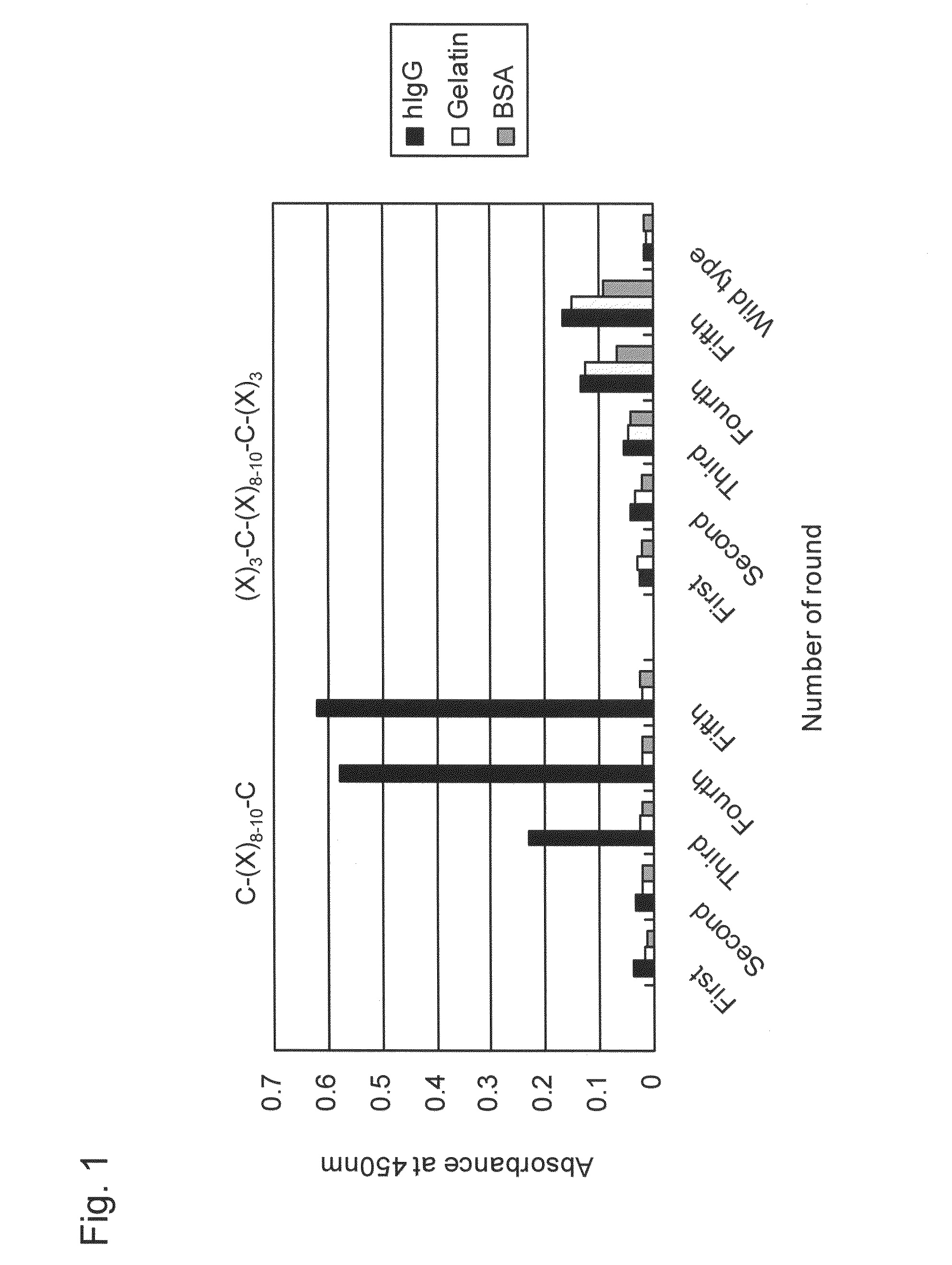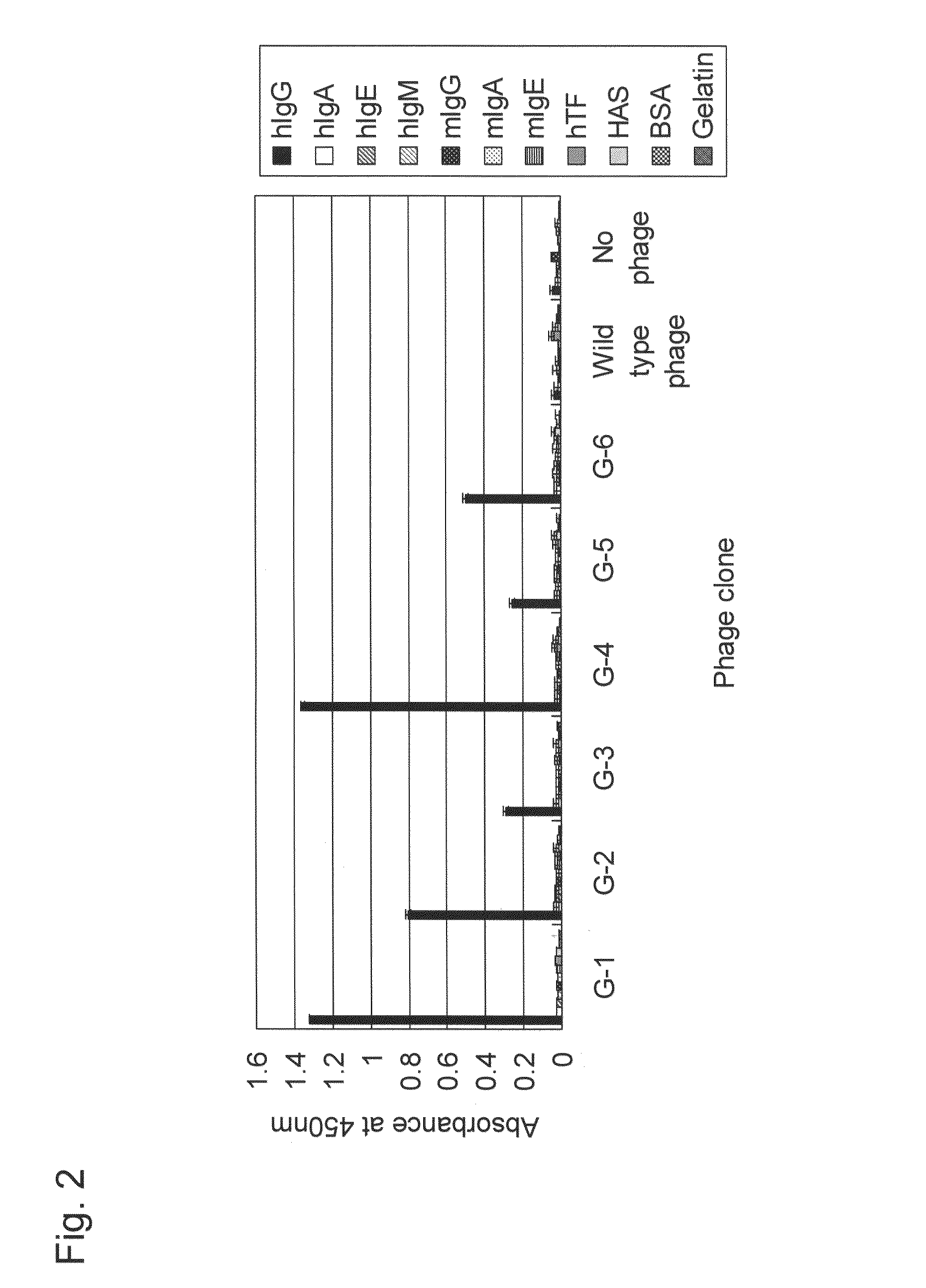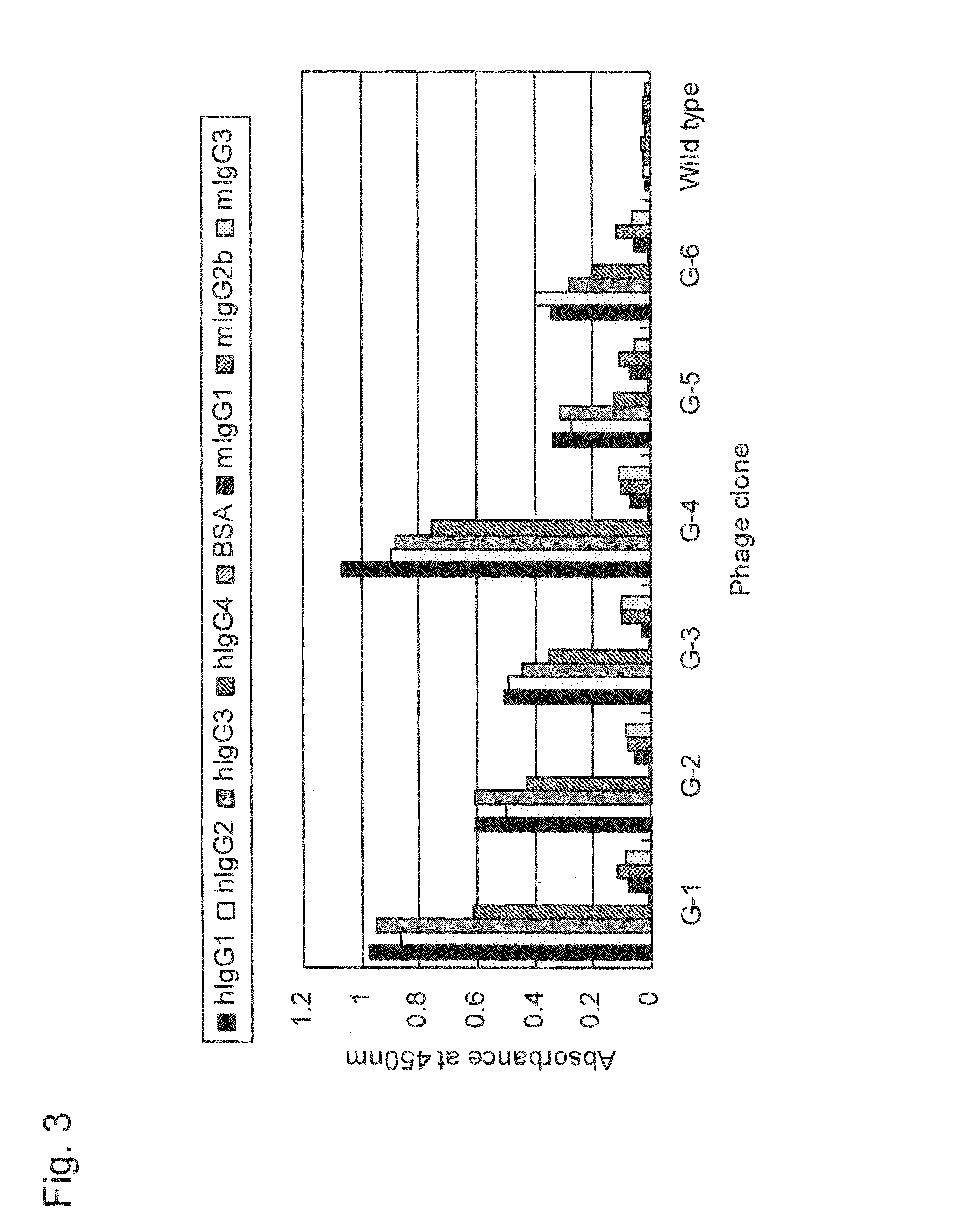IgG binding peptide
a technology of binding peptides and peptides, which is applied in the direction of peptides, peptide/protein ingredients, instruments, etc., can solve the problems of protein a/, easy denature, and inability to distinguish
- Summary
- Abstract
- Description
- Claims
- Application Information
AI Technical Summary
Benefits of technology
Problems solved by technology
Method used
Image
Examples
example 1
Seeking Human Antibody-Binding Motif
1) Construction of T7 Phage Random Peptide Library
[0177]Libraries displaying random peptides, C-(X)8-10-C (SEQ ID NO: 24) or (X)3-C-(X)8-10-C-(X)3 (SEQ ID NO: 25), exerting 8 amino acid sequence patterns on T7 phages were each constructed according to T7Select(R) System Manual (Novagen) using T7Select10-3b vector (Novagen). For details concerning construction of T7 phage random peptide libraries, see Krumpe L R, et al., Proteomics, (2006) 6 (15): p. 4210-4222 and T7Select(R) System Manual (Novagen). In addition, C-(X)8-10-C (SEQ ID NO: 24) denotes a peptide sequence in which 8 to 10 consecutive any amino acid residues (X) are sandwiched between cysteine residues (Cys) on the N-terminus and on the C-terminus. Also, (X)3-C-(X)8-10-C-(X)3 (SEQ ID NO: 25) denotes a peptide sequence in which, from the N-terminus to the C-terminus, 3 consecutive any amino acid residues, a cysteine residue (Cys), 8 to 10 consecutive any amino acid residues, a cysteine re...
example 2
Evaluation of Binding Specificity to Human IgG
1) Evaluation of ELISA Assay
[0184]Of phage clones isolated in Example 1, representative phage clones G-1 to G-6 displaying peptides hG-1 to hG-6, respectively, were subjected to an ELISA assay as described in Example 1 to evaluate the binding specificity to human IgG (hIgG). As control proteins, human IgA (hIgA), IgE (hIgE), and IgM (hIgM), mouse IgG (mIgG), IgA (mIgA), and IgE (mIgE), human transferrin (hTF), human serum albumin (HSA), bovine serum albumin (BSA), and gelatin were used. The results are shown in FIG. 2.
[0185]All the phage clones G-1 to G-6 exhibited extremely high binding specificities to human IgG, although they vary somewhat in the intensities (closed (black) bar in FIG. 2), but exhibited almost no binding activity to other control proteins including human IgA, IgE, and IgM, mouse IgG, IgA, and IgE, ThF, HSA, BSA, and gelatin. Therefore, it was shown that the peptides hG-1 to hG-6 displayed by the phage clones G-1 to G-...
example 3
Prediction of Binding Site in hIgG
[0189]To identify the binding sites in human IgG for the phage clones G-1 to G-6, a competitive ELISA assay was conducted with Protein A (SpA; cell wall constituent protein derived from Staphylococcus aureus) known to specifically bind to IgG Fc fragment. The ELISA assay was conducted basically in a manner similar to that in Example 1. Specifically, wells coated with human IgG (100 ng / 50 μl / well) were blocked with 0.5% BSA. T7 phage clones G-1 to G-6 (5×1010 pfu / well) and SpA with various concentrations were added simultaneously to the wells, incubation was carried out at room temperature for 1 hour, and then detection was carried out. Concentrations of SpA added herein were 0 ng / well, 15 ng / well, 30 ng / well, 60 ng / well, 125 ng / well, 250 ng / well, and 500 ng / well.
[0190]The results are shown in FIG. 4. As shown in FIG. 4, the higher the concentration of SpA added, the more strongly inhibited binding of G-1 to G-6 to human IgG antibody. The results sho...
PUM
| Property | Measurement | Unit |
|---|---|---|
| dissociation constant | aaaaa | aaaaa |
| temperature | aaaaa | aaaaa |
| pH | aaaaa | aaaaa |
Abstract
Description
Claims
Application Information
 Login to View More
Login to View More - R&D
- Intellectual Property
- Life Sciences
- Materials
- Tech Scout
- Unparalleled Data Quality
- Higher Quality Content
- 60% Fewer Hallucinations
Browse by: Latest US Patents, China's latest patents, Technical Efficacy Thesaurus, Application Domain, Technology Topic, Popular Technical Reports.
© 2025 PatSnap. All rights reserved.Legal|Privacy policy|Modern Slavery Act Transparency Statement|Sitemap|About US| Contact US: help@patsnap.com



